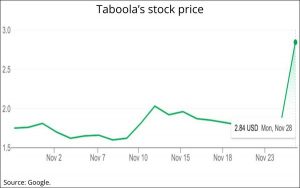Blogging for SEO is full of challenges: what to write about, what keywords to use, structuring your post with images and headers. You know there are a lot of things to consider, but one thing many people don’t stop to consider is whether they’re using the blog categories and tags to their advantage.
The truth is that I see more people doing things with categories and tags that hurt their SEO, rather than help it. As a remedy, Monika Jansen and I talk through five tips to help you properly utilize categories and tags on your blog. Spend 4 minutes watching the video or read on for the tips.
Organize your content with categories and tags
Anytime you go to a grocery store you know that similar types of food will be grouped together. So too should similar blog posts be grouped together, because this will make things much easier for visitors to your blog. Categories and tags can be thought of as a book’s table of contents, guiding users to the information they’re seeking.
Use broad categories on your blog
You don’t need a different category for every post you write – that’s where tags come in. Categories should be broad, and structured by SEO keywords.
At Social Light we use the following five categories:

StartupStockPhotos / Pixabay
- email marketing
- websites
- SEO
- social media
- small business (a general category for anything that doesn’t fit neatly in the first four)
Don’t use too many tags
Don’t make the mistake of thinking it’s a good idea to put a dozen tags on each blog post you write. Blog tags are different from YouTube tags, so they won’t increase your traffic. In fact, tags are really not that useful from an SEO standpoint.
The real purpose of tags is to organize similar content for readers. If a reader sees a tag on a post, they’re given the impression that there’s more content on a similar topic. So it’s a bummer when they click a tag and see nothing but the post they’ve already read.
Avoid posting duplicate content
Another issue with using too many tags is that it can result in duplicate content on your blog, which is something that will work against you on Google. Remember that a single piece of content is posted once for each tag. So if you have three tags attached to a blog post that are not used anywhere else, you’ll end up with three additional versions of the post and annoy Google.
Use no more than one category and five tags per post
Think about organization like a cookbook. Every recipe is placed in one chapter, but it might appear in the index multiple times with the ingredients. Use that formula for you blogs.
Yes, there are times that a blog topic will cross the line and be able to fit into a couple different categories. Resist the urge to put them in everything that fits, and choose the best match.
As we talked about, it’s not a good idea to overdo it with tags. You’re better off with no tags than too many, so make sure you limit yourself to five tags per blog post.
Want more tips on improving SEO for your blog? Take advantage of my series Two Weeks to a Better Google Rank.
Digital & Social Articles on Business 2 Community
(42)







